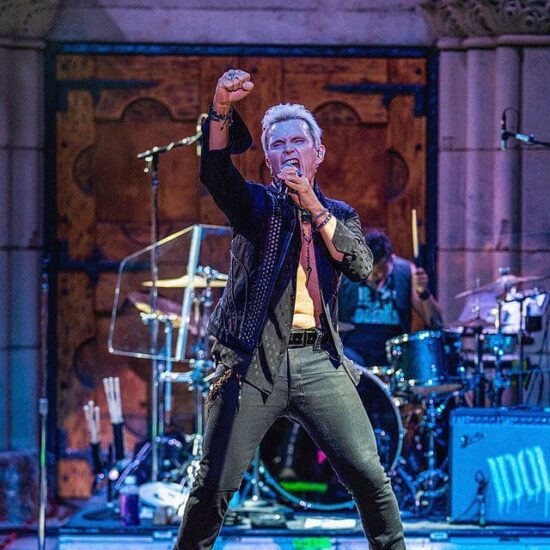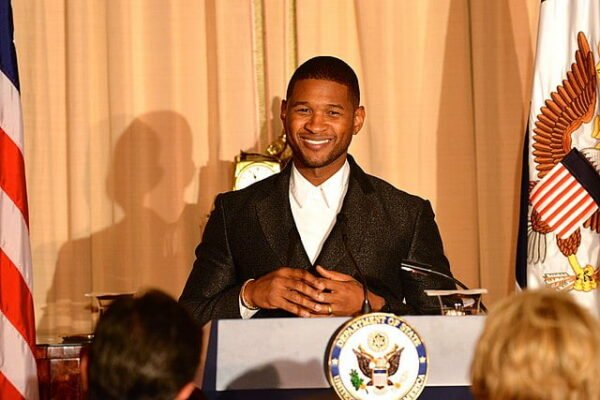Modern Talking, a German pop duo, rocketed to fame in the 1980s and 1990s, marking their era with iconic Modern Talking songs that captivated audiences in Europe and Asia, although their charm was less felt in the United States 23. The unique blend of Europop, synth-pop, dance-pop, and Euro disco, characterized by their mood-evoking lyrics and memorable melodies, solidified the legacy of Modern Talking members Dieter Bohlen and Thomas Anders as quintessential voices of their genre 1.
Getting to Know the Modern Talking Members: The Voices Behind Iconic Modern Talking Songs
This article aims to delve into the journey of the Modern Talking members, whose combined talents produced over 120 million records sold worldwide, making them one of the highest-selling German music acts in history 3. Through exploring their key contributions, musical milestones, and the impact they left on the music industry even after their disbandment and subsequent reunions, readers will gain a comprehensive understanding of the voices behind the beloved Modern Talking songs 3.
Modern Talking Songs
Back For Good Albums Songs Lists |
Sexy Sexy Lover (vocal version) Lyrics
Artist Thomas Anders Albums Songs Lists |
Dionne Warwick & Dieter Bohlen Albums Songs Lists |
A Telegram To Your Heart Lyrics
Modern Talking Albums Songs Lists |
Ready For Romance Albums Songs Lists |
In The Middle Of Nowhere Albums Songs Lists |
The Founding Duo: Dieter Bohlen and Thomas Anders
- Roles and Contributions:
- Dieter Bohlen took on multiple roles including lead guitar, chorus, production, and composition during the early years of Modern Talking (1983-1985) 3. He was also the arranger, songwriter, and producer for the duo, crafting most of their major hits 53.
- Thomas Anders focused on vocals and piano, bringing a powerful and distinctive voice that contributed significantly to the band’s unique sound 35.
- The duo was joined by Luis Rodríguez as a co-producer in their later years (1985-1987), and Eric Singleton added rap vocals during the reunion period (1998-2003) 3.
- Solo Ventures and Achievements:
- After the first split in 1987, Bohlen formed Blue System and delved into producing other artists. He also authored two autobiographical books, one detailing Modern Talking’s history, which sold a million copies in Germany 3. Bohlen’s career includes selling a total of 160 million records, with 125 million from Modern Talking alone 8.
- Anders, on the other hand, embarked on a solo career immediately after both disbandments, achieving more success post-2003 with albums like This Time and Strong, the latter reaching Platinum status in Russia 6. He is revered as a musical icon in Eastern Europe, performing stadium tours and being a staple in New Year’s Eve celebrations in Poland 6.
- Impact and Legacy:
- Modern Talking, formed in 1983, disbanded in 1987, reunited in 1998, and finally split in 2003, released 13 studio albums and several hit singles including ‘You’re My Heart, You’re My Soul’ and ‘Cheri, Cheri Lady’ 3. Their success was most pronounced in Europe, Asia, South America, the Middle East, and Iran, with global sales reaching 120 million by 2003, making them the biggest-selling German music act in history 3.
Key Contributions and Musical Milestones
Modern Talking’s journey through the music world is marked by their distinctive sound and monumental success. Their discography boasts albums like “The 1st Album,” “Let’s Talk About Love,” and “Back for Good,” each contributing to their global acclaim 1. Their debut single, “You’re My Heart, You’re My Soul,” set the stage for their success, selling eight million copies worldwide 3. This was followed by a string of hits such as “Cheri, Cheri Lady” and “Brother Louie,” reinforcing their dominance in the music industry 510.
- Hit Singles and Albums:
Their music, a blend of Europop, synth-pop, dance-pop, and Euro disco, resonated with audiences worldwide, leading to their impressive record sales of 120 million singles and albums combined 3. The band’s success wasn’t confined to their early years; their reunion album “Back for Good” took the number one spot in 15 countries, showcasing their enduring appeal 3.
- Musical Style and Success:
Modern Talking’s influence extended beyond their music. The high choruses in their songs, produced by the studio vocal line-up of Rolf Köhler, Michael Scholz, Detlef Wiedeke, and Birger Corleis, became a hallmark of their sound, though they were never officially credited on the albums 11. This unique element contributed significantly to their distinct musical identity and legacy in the pop music scene.
The Split and Reunion
The journey of Modern Talking, marked by their initial disbandment and subsequent reunion, unfolds a tale of artistic differences and personal endeavors.
- Initial Split (1987): The duo parted ways after their three-year contract ended, driven by Thomas Anders’ desire for rest due to touring fatigue contrasted with Dieter Bohlen’s ambition to continue capitalizing on tours. The split was further fueled by Bohlen’s accusations against Anders’ wife, Nora Balling, for causing conflicts within the group 12.
- Reunion and Achievements (1998-2003):
- Modern Talking reunited in 1998, releasing an album that revisited their hits through cover versions and remixes 12.
- They clinched a prize at the Monte Carlo Popular Music Festival in 1999, celebrated as the world’s best-selling German musical group 12.
- Before their final disbandment in 2003, the group released four more albums, showcasing their enduring appeal 12.
- Post-Disbandment Paths: Following the 2003 split, Anders embarked on another solo journey, while Bohlen focused on nurturing new talents. Bohlen’s 2006 song ‘Bizarre Bizarre’ hinted at an undying spirit of Modern Talking with the secret message, “There will never be an end to Modern Talking” 13. Meanwhile, Anders geared up for a solo career and Bohlen ventured into authoring a second book and engaging with reality TV 13. Despite their separate paths, the legacy of Modern Talking songs continues to resonate, with Anders performing with Modern Talking Band in Los Angeles in 2015 14.
Legacy and Influence
Despite not achieving mainstream success in the United States, Modern Talking’s global impact is undeniable. They stand as the third greatest Music Act in history, trailing only behind the Beatles and ABBA, showcasing their international appeal and significant contribution to music history 2. This achievement is particularly impressive considering the evolving landscape of modern pop music, which has seen a decrease in timbral variety and a move towards more simplified and homogeneous sounds due to industry risk aversion 15. Modern Talking, however, has managed to maintain a timeless quality in their music, appealing across various demographics 8.
- Global Sales and Recognition: Modern Talking’s remarkable sales of over 120 million singles and albums worldwide affirm their status as Germany’s most successful pop duo 3.
- Musical Influence: Despite the homogenization trends in modern pop music, Modern Talking’s distinctive blend of Europop has remained appealing, characterized by its rich instrumentation and memorable melodies 15.
- Cultural Impact: The duo’s music transcends borders, languages, and generations, illustrating the universal appeal of their sound. In the United States, they found a niche audience, being recognized as an Italo Disco band, which highlights their diverse influence even in markets where they were not mainstream 2.
Modern Talking’s legacy is a testament to their unique sound and the enduring appeal of their music, which continues to resonate with audiences around the world, despite the changing dynamics of the music industry 815.
Conclusion
Throughout the musical odyssey of Modern Talking, Dieter Bohlen and Thomas Anders emerged as pivotal figures in the pop music scene, their journey marked by a series of commercial successes and artistic milestones. The duo’s distinctive blend of Europop, coupled with their memorable lyrics and melodies, not only catapulted them to the forefront of the music industry but also solidified their place as Germany’s most successful pop duo. Their story, from the early days of iconic hits like ‘You’re My Heart, You’re My Soul’ to their enduring legacy post-disbandment, underscores the profound impact they’ve had on the music world and their audiences worldwide.
The enduring appeal of Modern Talking across various demographics and cultures speaks volumes about their timeless quality and the universal relatability of their music. As the curtain falls on the tale of Modern Talking, it’s clear that their legacy is not confined to the past but continues to influence and inspire. Their remarkable journey from chart-topping success to becoming a legacy act exemplifies the lasting impact of their contributions to the music industry, reminding us of the lasting power of melody, emotion, and creativity in the constantly evolving world of pop music.
FAQs
Q: Who provides the lead vocals for Modern Talking?
A: The lead vocals for Modern Talking were provided by Bernd Weidung, better known by his stage name Thomas Anders. Born on March 1, 1963, Anders is a German singer, songwriter, and record producer who gained fame as the sole vocalist of the pop duo Modern Talking.
Q: What is the history of the Modern Talking members’ collaboration?
A: Modern Talking, as a duo, collaborated from 1983 until 1987 before they initially disbanded. They later reunited and experienced a successful return to the music scene, producing and releasing new songs from 1998 until their final split in 2003.
Q: Can you explain the reasons behind Modern Talking’s breakup?
A: Modern Talking parted ways in the middle of 1987. The breakup was reportedly due to Dieter Bohlen’s decision to pursue his own project named Blue System. He focused on creating songs such as “My Bed Is Too Big”, “Love Suite”, and “Deja Vu”, among others, which led to the dissolution of the duo.
Q: Who were the founding members of Modern Talking?
A: The original lineup of Modern Talking consisted of two German musicians: Thomas Anders, who handled the lead vocals, and Dieter Bohlen, who played guitar, provided backing vocals, wrote songs, and worked as a producer. They were known for their Eurodisco, Europop, and Eurodance style and enjoyed two periods of success, first from 1984 to 1987 and then from 1998 to 2003.
References
[1] – https://synpop.com/modern-talking/ [2] – https://www.quora.com/Why-is-the-German-band-Modern-Talking-not-as-popular-in-the-United-States-as-they-are-in-other-countries [3] – https://en.wikipedia.org/wiki/Modern_Talking [4] – [5] – https://www.youtube.com/playlist?list=PLFuJpMqzsAfyOu6u81fIlWDyInKRZsrx2 [6] – https://en.wikipedia.org/wiki/Thomas_Anders [7] – https://www.youtube.com/watch?v=4w5E_Z3ITXo [8] – https://tenkensmile.blogspot.com/2020/12/modern-talking-comeback-eric-singletons.html [9] – https://www.thomas-anders.com/en/biography/ [10] – https://www.radioswisspop.ch/en/music-database/musician/320866dd7a255797505a81831d4dee4265a0b [11] – https://golden.com/wiki/Modern_Talking-66GKG [12] – https://en.salvemusic.com.ua/modern-talking-modern-toking-biografiya-gruppy/ [13] – https://www.dw.com/en/modern-talking-says-goodbye/a-898379 [14] – https://californiagermans.com/revisit-the-hits-of-the-80s-with-modern-talking/ [15] – https://stereomonosunday.com/2019/03/23/why-modern-music-is-so-awful/





